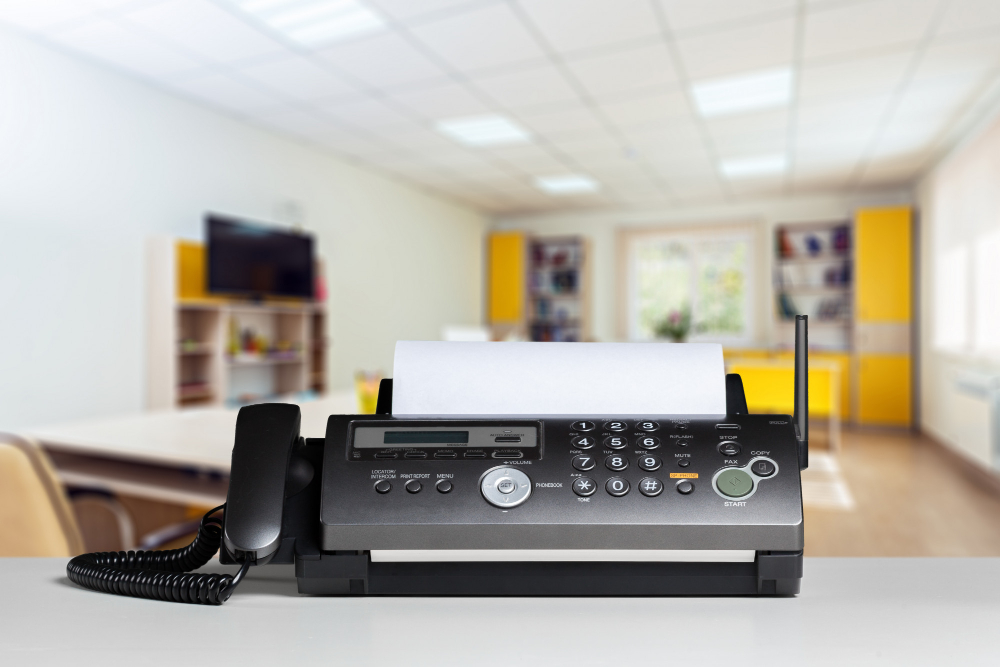Faxing has been a trusted method of communication in the business world for what feels like an eternity. Even as technology continues to evolve, faxing stays put. Companies now face a pressing decision: stick with the classic machines or switch to digital alternatives. But which method truly meets the needs of modern businesses? Now it’s time to get down to business – let’s contrast their perks, pitfalls, and the constraints that shape their potential.
Traditional Faxing: A Legacy System
Traditional faxing, established in the early 20th century, relies on physical fax machines connected to phone lines. Its process is straightforward: paper documents are scanned and transmitted as signals over telecommunication networks.
Advantages of Traditional Faxing
- Simplicity: Operating a fax machine requires minimal technical knowledge.
- Reliability: Fax machines depend on stable phone lines, ensuring communication continuity during internet outages.
- Legal Recognition: Faxed documents, with physical signatures and timestamps, are legally binding in many industries, such as law and healthcare.
Limitations of Traditional Faxing
- Resource-Intensive: Requires physical paper, ink, and regular maintenance.
- Time-Consuming: Sending and receiving documents often takes longer compared to digital methods.
- Space Requirements: Machines and supplies occupy valuable office space.
- Security Risks: Sensitive documents can be intercepted during transmission or left exposed on shared machines.
Current Usage Statistics
A survey conducted in 2023 revealed that 43% of small-to-medium-sized businesses still use traditional faxing in some capacity, citing its perceived reliability. However, this figure is steadily declining.
Digital Faxing: A Modern Alternative
Digital faxing, also known as online faxing, eliminates the need for physical machines. Instead, it relies on fax apps to send and receive faxes via email, apps, or web interfaces. One of the most popular apps of its kind is FAX from iPhone, which can be installed from the App Store. It has all the necessary features and is safe.
Advantages of Digital Faxing
- Cost Efficiency: No need for paper, ink, or dedicated hardware.
- Accessibility: Access faxes anytime, anywhere, from any device with internet connectivity.
- Eco-Friendly: Reduces paper waste and carbon footprint.
- Enhanced Security: Encrypts documents during transmission and offers password-protected storage.
- Integration Capabilities: Seamlessly integrates with business software, such as CRMs and cloud storage solutions.
Limitations of Digital Faxing
- Dependence on Internet: Service interruptions can hinder faxing capabilities.
- Learning Curve: Employees may require training to use digital platforms effectively.
- Initial Setup Costs: While cheaper in the long run, transitioning to digital systems may involve upfront expenses.
The Growing Popularity of Digital Faxing
Research from 2024 suggests… A significant majority of businesses – a whopping 68 percent – have made the switch to digital faxing. Two industries where it’s really making a name for itself? Finance and healthcare, hands down. Faster, leaner, and greener – that’s what’s driving the shift in today’s fast-paced environment.
Key Considerations for Businesses
1. Industry Requirements
Certain sectors, such as legal and healthcare, mandate secure communication methods for sensitive data. Traditional faxing might still be necessary for compliance in some cases. However, digital faxing solutions often meet and exceed security standards through encryption and audit trails.
2. Volume of Usage
High-volume users may benefit from digital faxing due to its scalability and reduced operational costs. On the other hand, businesses with occasional faxing needs might find traditional systems sufficient.
3. Cost Analysis
- Traditional faxing incurs ongoing expenses, including paper, ink, phone line rentals, and maintenance.
- Digital faxing typically follows subscription-based models, with options tailored to business size and needs.
4. Environmental Impact
Organizations aiming to minimize their environmental footprint should consider the benefits of digital faxing. A study by GreenTech Alliance found that shifting to digital communication can reduce a company’s paper waste by 30-40% annually.
Digital Faxing vs. Traditional Faxing: A Quick Comparison
| Feature | Traditional Faxing | Digital Faxing |
| Cost | High (supplies, phone line) | Low (subscription-based) |
| Speed | Slower | Faster |
| Security | Moderate | High |
| Ease of Use | Simple | Varies (requires training) |
| Environmental Impact | High (paper waste) | Low (eco-friendly) |
| Accessibility | Limited to office | Anywhere, anytime |
Conclusion: Which Is Better?
The devil’s in the details – your business needs dictate the answer.
- Stick with traditional faxing if you prioritize legal recognition and have minimal technical requirements. You’ll find this method consistently at play in industries bound by strict rules and guidelines.
- Transition to digital faxing for speed, flexibility, and cost efficiency. If you’re after a communication system that’s forward-thinking, sustainable, and can grow with your business, this is the way to go.
The buck stops with you when it’s time to assess your infrastructure, goals, and industry norms. Digital faxing might be the flashy newcomer, but traditional faxing has carved out a comfortable niche for itself in areas where the tech just doesn’t cut it. Picking the right method depends on what’s top of mind for your business right now – and where you see it headed.

